Review Rundown: The One With A Whole Lot Of Immersive All At Once
ELEVEN REVIEWS. NYC, LA, Vancouver, Toronto, SF, New Jersey, and more. Haunts. Puzzletales. Opera. LARP. That which defies classification.
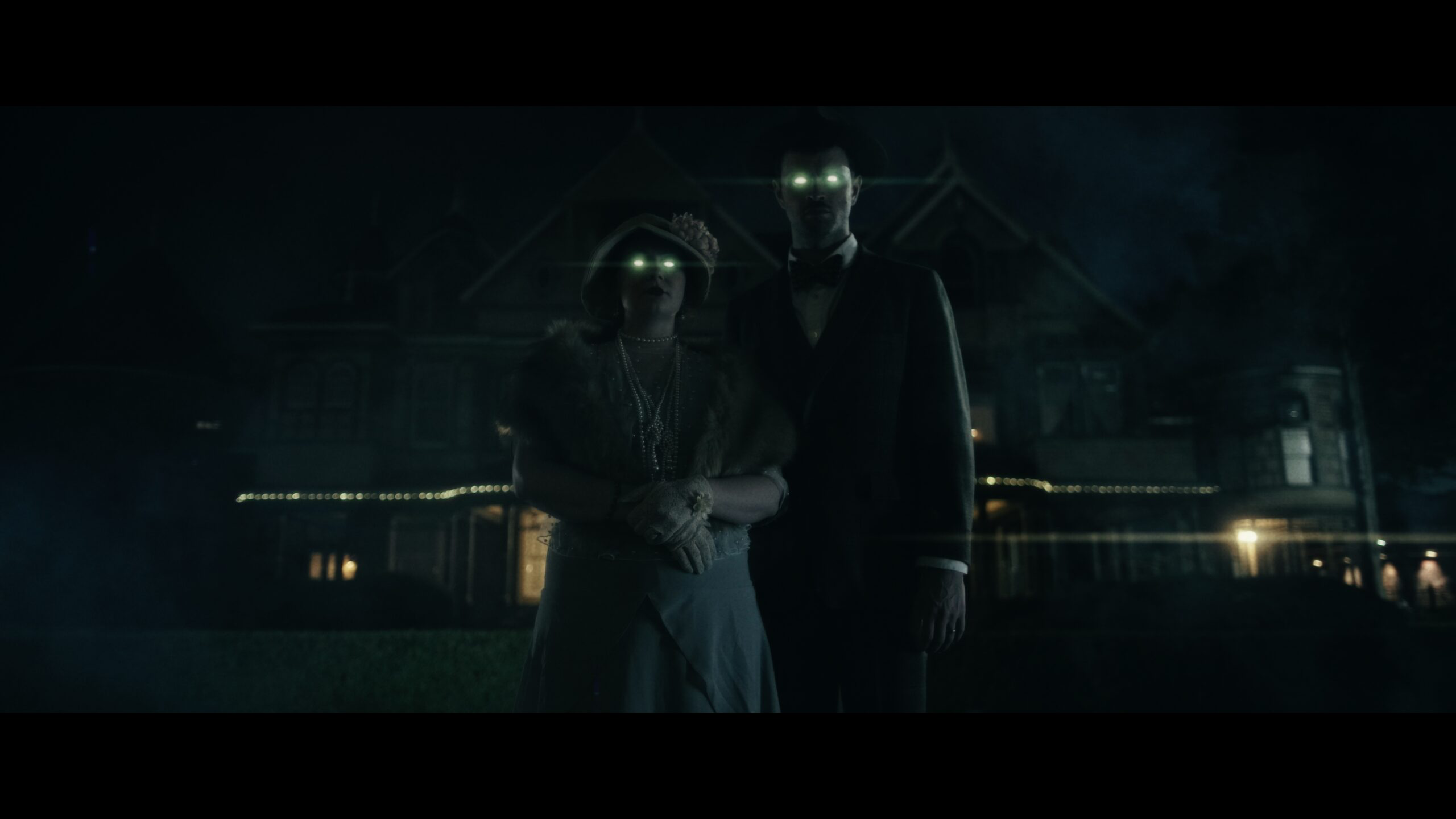

This one is big, it gets an executive summary:
- NYC: experimental shows on Gowanus Canal, Linked Dance Theatre’s latest, a new immersive cocktail experience.
- New Jersey: a horror LARP.
- SF Bay Area: Two Haunts.
- SoCal: Opera. Halloween Tea.
- Toronto: Zombies.
- Vancouver: AI.
- At Home: a lovely Puzzletale.
Let’s get into it.
Was 11 reviews not enough for you? Would you like 8 more? Your wish is granted.
Are you a creator who looks upon these reviews with envy? Okay, the positive ones, at least? Then you might want to check out our How To Get Covered By NoPro guide. Want to get listed in our newsletter and have your event shared with our social media following? Submit a listing to Everything Immersive.
Keep No Proscenium free for all by becoming a Patreon backer today!

Cultural Ecologies — Unheard-of + The Gowanus Dredgers
$15 or free, NYC; Run Concluded
In a recent review of the U2 concert in the Sphere in Las Vegas, the band insists on the centrality of their performance; without it, the spectacle would be “empty.” That’s true, but it’s also true in reverse: any multimedia audio experience is the music as well as the setting and visual effects. What the audience perceives is a synthesis where each element is critical. Cultural Ecologies exemplifies this.
The center of the work I saw–called What Remains–was a performance of the Unheard-of ensemble of Christopher Stark’s Fire Ecologies, a 50 minute meditation on human impact on natural ecosystems. To create the piece, Unheard-of teamed up with the Gowanus Dredgers, a volunteer organization dedicated to providing waterfront access and education to the public. Viewers could listen from the dock or take a canoe into the Gowanus Canal, listening from the water. Video art by Zlatko Ćosić was projected on rocks on shore during the performance.
As I sat in my canoe, expertly steered by my guide Jos Prol, I could not (as U2 insisted) find a single dominant part of the experience. The music itself was transportive, a combination of live musicians and electronic soundscapes which seemed to shift from an aquatic ecosystem to a missile-like staccato of human interventions ending in a return to the natural rhythms of water, changed but resilient. This listening experience from a Superfund site was profound as I looked across the Canal at plant life, gravel storage, and scrap barges.
Buffeted by winds, my orientation to the musicians kept changing; I found my attention shifting between them, the industrial structures, and the water. The projections weren’t as successful–the rocks bleached out everything displayed–but I honestly preferred them that way, just gestures of lines on the shore. During the quieter parts of the composition when the musicians paused, I could hear the lapping of the water and the sounds of traffic on Route 278 in the distance. It was impossible not to meditate on what humans did to this space and how nature endures through it.
At the top of the show, Unheard-of’s director discussed the time they spent working with the Gowanus Dredgers on this piece, and that commitment was obvious. I simply lost myself in an immersion of audio commentary on a stunning and troubled urban landscape. I don’t know how I could separate those elements or why I would ever want to.
– Nicholas Fortugno, New York Correspondent
The Incomplete Collection by Linked Dance Theatre
$40-$90; Queens, NY; through November 19th
The Incomplete Collection by Linked Dance Theatre is a sandbox-style production where audience members have the freedom to roam the back gallery of Culture Lab LIC and engage with actors as well as uncover some puzzle elements along the way. The production itself is actually curated as a part of the current art installation in the space, The Inevitability of Absence by Tess Howsam, which is a delightful intersection of visual and experiential art. The piece was inspired by that fateful moment when you’ve “lost your idea,” and introduces the audience to a variety of “incomplete ideas” embodied by live performers. The charismatic Curator of this collection seeks out the very best material and is open to selling you one of her ideas for the right price — a new, better, incomplete idea of your own. While a gallery filled with animated ideas seems like an art connoisseur’s dream, there is a darkness lurking just beneath the surface which is up to the audience to uncover.
This concept is incredibly fascinating, but ultimately this iteration of the piece was a bit too ambitious. I was able to attend the first public showing in 2022 which I very much enjoyed, but some of the magic seems to have been lost in the current production which I imagine is largely due to the constraints put upon immersive theatre creators when trying to achieve any profit from making work. The capitalistic nature of the industry makes it incredibly difficult to provide intimate, highly detailed work and still receive a return on investment. The main issues with the piece can all be traced back to this.
For example, this production uses a tiered ticketing system that allows audience members with the highest ticket price the most time in the gallery, an intimate introduction and onboarding from The Curator, and a guaranteed one-on-one experience. As the tiers titrate down, spectators lose time and intimacy as once more audience members enter the gallery, the chances of a one-on-one becomes smaller. The space also makes it difficult to receive a true one-on-one after the first tier of audience enters because all of the performers are in open space, meaning that not only can anyone walk into what you hoped to be a private moment at any point, but intimate offerings you may share are subject to being heard by your neighbors due to sound bleed.
The tiered tickets also created an awkward moment towards the end of the show in which only the top two tiers of the audience are invited to a buying session with The Curator. Audience members of different tiers that made their way into the designated space were escorted out. Tiering tickets makes sense in order to provide affordable and accessible tickets while still having the opportunity to achieve more equitable profits from higher priced tickets, but the VIP-ness of the higher tiers needs to offer something in addition to the experience instead of taking key parts of the experience away from lower priced tickets. All ticket tiers must have a thorough and thoughtful experience of the piece as a baseline.
What the production did well was what Linked Dance Theatre always does best: provide incredible talent. Rita McCann shined as The Curator, employing charm and wit in rubbing elbows with the audience and wheeling and dealing them into buying the ideas. Performer Carter was a highlight as The Blessing as well, offering a sincere groundedness with spectators but also clever and snappy resistance to The Curator’s oppressive tactics.
This production is a solid effort, but I hope to see further iterations of it achieve a more wholistic experience design (capitalism allowing). But as it stands now, The Incomplete Collection does feel a bit incomplete.
— Allie Marotta, New York City Curator
Machine Folklore — Software2050 & NAXS FUTURE
$15 CAD ; Vancouver, Canada; Run Concluded
The Vancouver Film Festival’s VIFF Live series consists of live performances that exist at the convergence of cinema and other artistic media. The first event of this series, Machine Folklore, came from Taiwanese interdisciplinary new media art collectives Software2050 & NAXS FUTURE.
Through a live electronic DJ performance, light design, and computer imagery, the performance aimed to reveal “humanity through non-human A.I. eyes.” However, this ambitious premise fell flat in its presentation. The visuals felt repetitive, with a level of intricacy that at times felt less impressive than what one might create with consumer-ready AI software in the comfort of their own home. The multi-disciplinary aspects of the experience were enjoyable — seeing how the music synced to the images and was accompanied by flashes of the house lights definitely heightened the experience. However, this is an occurrence one would find at most electronic music concerts.
Perhaps the work would have benefitted from a more in depth explanation as to the process and prompts used to create the imagery. But in its current form, Machine Folklore felt long, repetitive, and did not deliver on the ambition promised in its premise.
However, it’s important to keep in mind that this work was created more than a year ago. Given the speed at which AI is innovating — for instance, ChatGPT was launched less than 11 months ago — one whole year is a very long time. The visuals rendered in this performance were rendered before many hobbyist AI tools were created. As AI-enabled art continues to permeate into the mainstream, it will be interesting to see how these artists combat innovation’s rapid timeline.
Katrina Lat — Toronto Curator
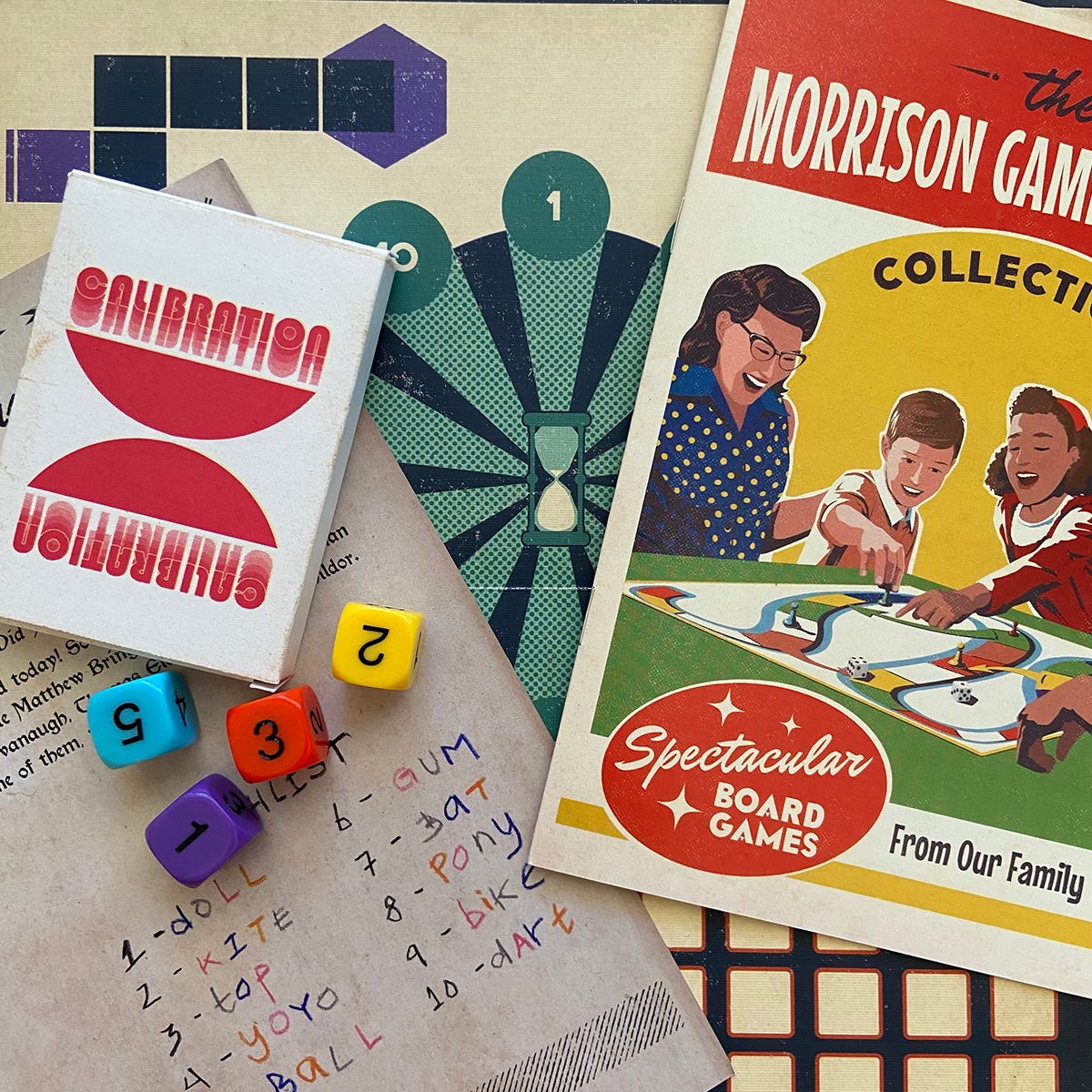
The Morrison Game Factory — PostCurious
$39; Delivery; Pre-order on Kickstarter
Disclosure: creator Lauren Bello is an occasional contributor to No Proscenium. the edition reviewed was a factory test sample provided by the publisher.
The Morrison Game Factory takes the form of a strange collection of board game fragments that have been packaged up in a single box. As the story has it this was discovered by an urban explorer in a decommissioned game factory and sent to us because we’re better at this kind of thing than they are.
Once it gets going Morrison is a sometimes bittersweet ride through a tale whose mid-century classic board game aesthetics give the whole experience a unique tone. The world that creator Lauren Bello builds here is so specific, and in her writing it’s a world that feels lived in and even a little expansive even as it focuses itself on just a pair of characters. You know exactly where and when you are while playing the game. Perhaps it’s to be expected of a Nebula award nominated TV writer (The Sandman) who is known to be a puzzle/box game fanatic. In any case: all that is to our benefit.
Like the best of the genre The Morrison Game Factory feels like a story unfolding in something like real-time. As elements of the backstory are revealed there’s a component of the tale advancing in the present as well. Some of that is leveraged through the app component of the game, which nails its own early computing aesthetic.
Most pleasing of all, from a production standpoint, are the game pieces and elements in the box. It feel like someone constructed a “message in a bottle” out of leftover scraps from a game factory, and that commitment to the bit (academic translation: intelligent use of diegetic narrative components) just grounds the fanciful elements of the story in a way that makes things feel “real” even if they’re not strictly plausible.
— Noah Nelson, Founder and Publisher, from his feature length review
№9 by Roll the Bones
$137.70 per pair; Brooklyn, NY, 11249; currently through November 4th
№9 by Roll the Bones is both an immersive performance and a themed cocktail lounge in Williamsburg taking the guise of a post office for letters that have lost their way. These “dead letters” are the portal into the immersive experience, which transports the audience into a highly designed, curated environment to meet an inhabitant of that space. The current three offerings each entail a different locale and time period and audience members must book tickets for the specific room/“place” they would like to visit. The experience is designed for audience to encounter one room per visit but it’s possible to book back to back time slots to see all three. The purpose of the experience is to have an hour of conversation with both the immersive performer and a rotating crew of strangers that shuffle in and out every twenty minutes. After the hour is up, participants are welcome to have a drink and debrief in the bar and lounge and are likely to run into their fellow time travelers to re-connect.
This space, and this experience, have a lot of potential.
Get No Proscenium’s stories in your inbox
Join Medium for free to get updates from this writer.
SubscribeSubscribe
It’s in the right neighborhood, it’s versatile, and it’s interesting. But the experience as it currently stands feels unfinished. Chatting with an immersive performer in character is always a treat, but there doesn’t appear to be any structure to the experience — you are literally just chatting. Each room has its own theme and some light backstory can be chiseled out if you ask enough questions, but do not expect a plot, experiential activity, or transformative process. I would have loved to see a stronger incorporation of the time period in each room, and perhaps this would come with a smidge more structure. As the conversation is really free-flowing and fair game for anyone in the room, other audience members dropped the period aspect or referred to it jokingly, showing that they weren’t buying into the suspension of disbelief. And, your fellow audience members can make or break your experience. The piece also has strong lore and feels very guided in the onboarding and introduction, but after your time in the room is up, the experience ends without any formal offboarding. (In fact, we accidentally walked away with a wearable prop due to this — sorry friends!)
What I loved about №9 was the intricacy and thoughtfulness of the set design and environment curation in each room. This is an immersive explorer’s dream: there are so many small details to uncover just by observing the space and each space has a feeling of thoroughness that is hard to achieve. The talent is also impeccable; Roll the Bones’ usual suspects Taylor Myers and Rebekah Morin shined in their respective roles. Myers as the Postmaster had us leaning in, captivated by carefully executed text and movement, while Morin’s dutiful but curious porch dweller handled the conversational curve balls thrown by audience participants with ease and intrigue.
With just a bit more development, №9 could be the next hottest ticket in New York City. As for now, it’s worth a shot if you have the means and like to be the ‘main character’ participant in an immersive experience.
— Allie Marotta, New York City Curator
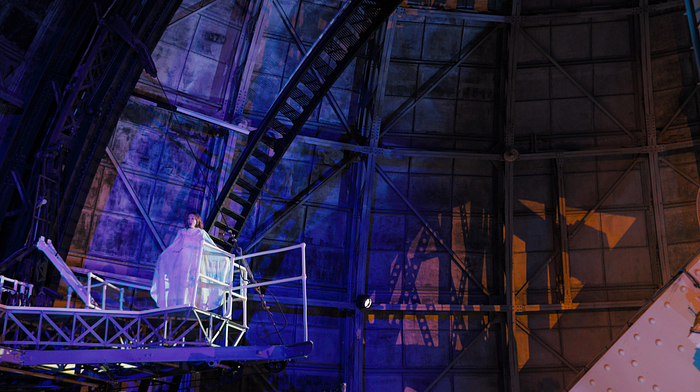
Star Choir — The Industry
LA; Run Concluded
Previous Industry projects have centered around colonialism, immigration, social justice, and the lived experience of those impacted by systemic violence and racism (the breathtaking HIVE RISE is one such project). STAR CHOIR’s astronomic story of colonialism and its total destructiveness was a natural progression for the company. The experience seemed perfectly primed, thematically and spatially.
And then it lost its way.
The observatory’s dome is a massive structure, like a spacecraft in its own right. A small cast of eight struggled to maintain presence across the dome’s diameter. With the 100-inch telescope rising from the center, visibility of the walkway was limited. Even with singers in view, there were blocking missteps: one singer repeatedly stood directly in front of the monitor, obscuring the supertitles. This could potentially be attributed to rehearsal constraints within the observatory, but The Industry’s identity is, in large part, defined by performances in unconventional and challenging locations.
The sci-fi canon in novels and film has long probed STAR CHOIR’s general premise and although the opera was billed as a “reimagining [of] humanity as a porous category that must transform to survive,” the story failed to soar. By Act Three, the story felt so porous that it lacked clear and compelling definition. In spite of the superb orchestra and gorgeous music, the libretto and staging failed to deliver. In the end, the climax was delivered by the venue’s extraordinary capabilities, not the show itself.
Laura Hess, Arts Editor, from her feature length review
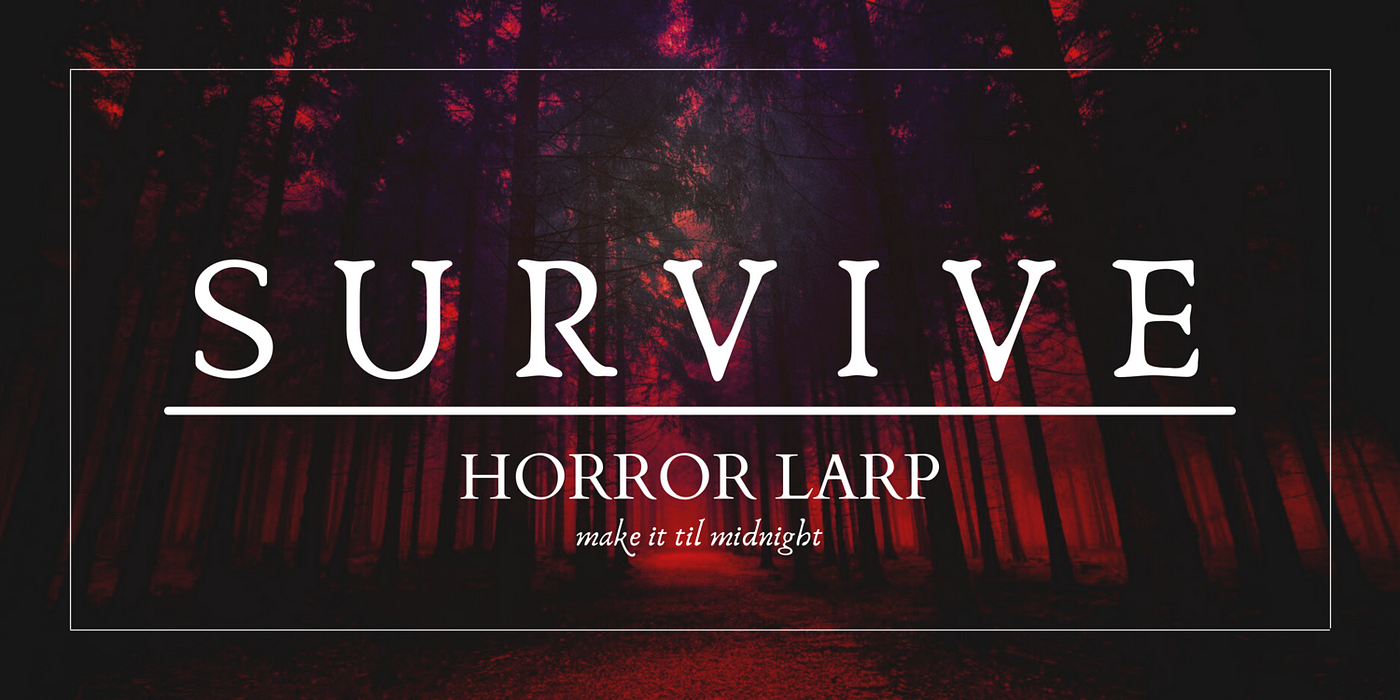
Survive — Anomalous Entertainment Co.
$100 — $200; Columbia, NJ; Run Concluded
Survive from AEC Games plunges you into an intimate battle for your own humanity. This LARP is a masterclass in minimal mechanics and psychological horror, designed to elicit everything from unexpected humor to existential dread.
The premise is simple yet terrifyingly effective: the world has collapsed and the dead have risen as unkillable monstrosities that retain their memories, intelligence, and personalities. All we know is that these monsters come out after dark and they want us to join them. Your goal is to stay alive, scavenging by day and hiding by night. The game’s minimalist approach to character development makes it easy for players to effortlessly insert themselves into this grim new reality. With no stats or written character sheets, players need only bring a vague concept of their character’s name, background, and motivations, making the game equally accessible to newcomers and seasoned players.
One of Survive’s standout features is its emphasis on onboarding and visualizations. Game runners facilitate pre-game exercises that help players prepare emotionally, creating a shared headspace for players to fully embrace their roles and relationships in this apocalyptic nightmare. Survive does a great job embracing chaos, mirroring the unpredictability of a world overrun by the undead. Unreliable tools like malfunctioning cap guns, poor cell connections, and dull scissors add layers of tension and authenticity, further immersing players in the game’s reality.
Survive’s gameplay is split into two sections: day and night. Daytime is spent learning as much as you can about your situation, searching for clues, forming alliances and building relationships. Night, starting around 7:00 PM and running through midnight, is for survival. The odds of making it through the night are vanishingly small, but getting killed isn’t the end. Players who get turned spend the rest of their night working with fellow monsters to make sure nobody lives to see sunlight.
The game’s mechanics are cleverly designed to ensure replayability. Random betrayer cards distributed after character workshops make meta-gaming (aka trying to optimize the game’s outcome from a player’s point of view) difficult. The pacing of the game leans into anxiety, tension, and the horror of waiting.
Survive is a horror game, but it doesn’t rely on gore or jump scares. Its brilliance lies in the amount of space it provides for players to dig deep into moments of solitude and connection, making each character’s inevitable loss that much more effective. It’s a LARP that embodies the essence of immersive play, plunging participants into a world where fear is palpable, hope defies logic, and every decision resonates with significance.
— Leah Davis, New England Curator
Terror Vault: The Initiation — Into the Dark Productions
$65-$105; SF; Now through October 31
Terror Vault has returned to San Francisco for its annual haunt. This year’s production, The Initiation, continues the annual tradition — again taking over the old San Francisco Mint, for the area’s premier haunt. This year visitors are invited guests for not-so-subtly evil cult, known as “INsight.” Initiates quickly learn that a disagreement between the group’s founders has led to bloody rebellion, and we’ve got a front row seat to the demonic battle.
Into the Dark Productions, a collaboration among Peaches Christ, David Flower Productions, and Non Plus Ultra, based this year’s event loosely on the Bay Area’s history of strange and bizarre cults. The historic building continues to be an excellent venue for the event, its aged passageways lending a sense of place and history to the event, while allowing Terror Vault to remain a distinctly Bay Area event while still reinventing itself each year.
Year after year, Terror Vault has excelled at presenting a varied haunt experience while staying on narrative, and The Initiation is no exception. Over the course of the almost 1 hour experience, initiants are locked into claustrophobic, almost coffin like boxes and then chased freely through open large free-roaming mazes. Participants are lured into the action, invited to sit around the table with cultists and also voyeuristically peer through peepholes at the action. At some point, we were given a nominal task to complete, though even the simplest instructions were hard to focus on, when demonic cultists and jump scares could hide in every shadow or around every corner (though never over-deployed). As always, glow necklaces are available for participants to opt into being touched by performers, though the level/intensity of that touch varies person-to-person, scene-to-scene.
Past years have featured additional experiences, such as an escape room, but this year, the team wisely focused their attention on the main event, and their dedication is well rewarded with a very strong entry. The Fang Bang bar and gift shop have been relocated from past years to the basement, a big improvement on the theming of the experience, which allows the gift shop and cocktail bar to feel more integrated into the experience. Terror Vault remains a highlight of the spooky season in the Bay, and I can’t wait to find out what twisted experiences they’ll terrify us with in years to come.
— Brain Resler, SF Curator
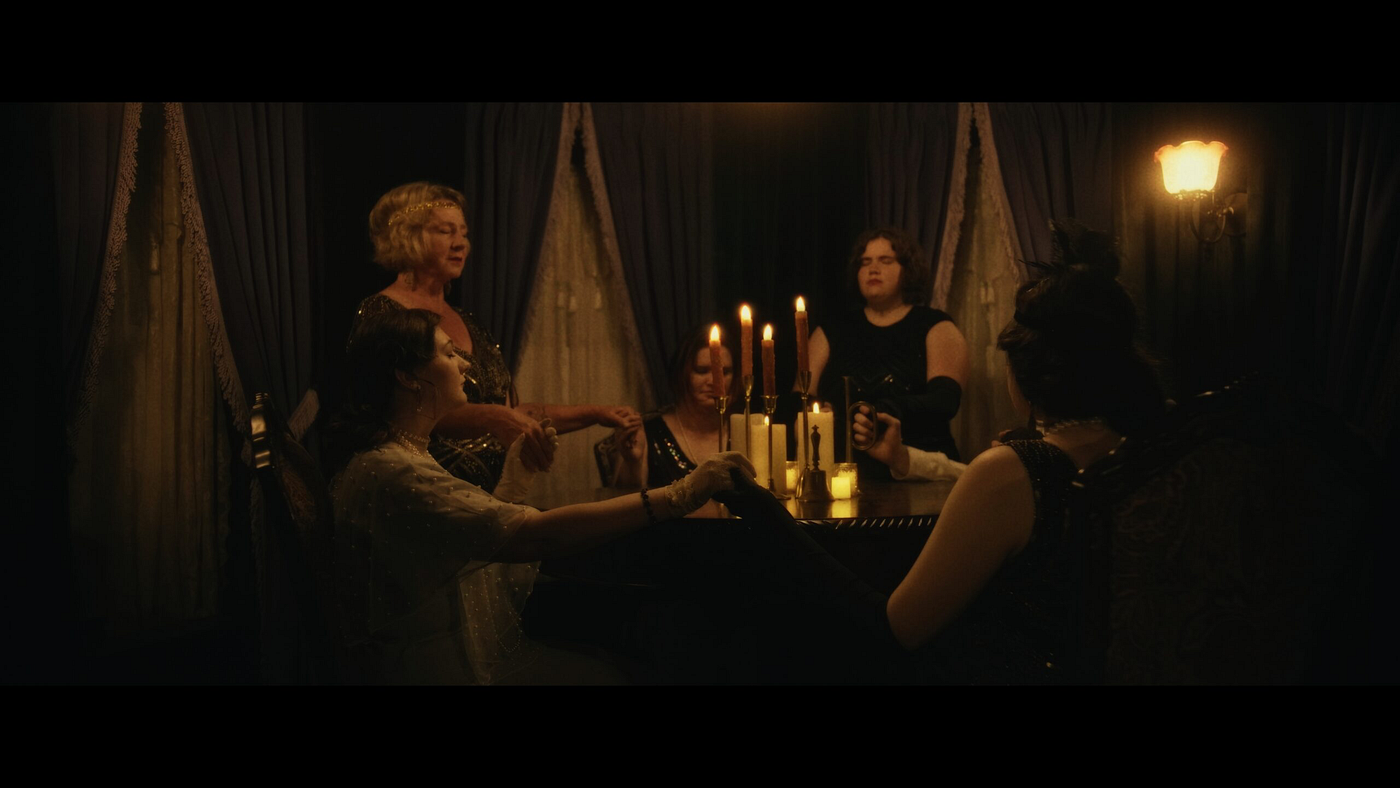
Unhinged: Housewarming — Winchester Mystery House
$65-$100; San Jose; Through October 31st
Since tours of the Winchester Mansion started over 100 years ago, theories about the house’s paranormal, spiritual, and supernatural happenings have run wild. Many of these are speculation, but that doesn’t mean the house isn’t the perfect setting for a haunted experience.
This year’s immersive haunt tells the fictional story of a young Hollywood couple that purchases the estate in 1923 and throws a housewarming party. But there’s a catch: they’re into the occult. The experience starts with a “lavish garden party.” This part of the tour was really hyped up in the description, it wasn’t all it was cracked up to be. There were themed drinks (with a long line), and some games and entertainment, but this segment felt more like a glorified waiting area.
Then, the haunted house experience commenced! I’d never been to the mansion, so a lot of what charmed me about the experience was the house itself. Its bizarre, labyrinth like design, with dead end staircases, tiny hallways, and hundreds of rooms, was used to the fullest. Whether we were crouching in the low ceilinged basement crypt, or being jump-scared around a tight corner, I felt disoriented (in a good way) by the setting alone. Also, the groups were perfectly spaced out, so I could take in the house at a reasonable pace.
The immersive element of the experience was pretty standard haunted house fare. There were jump scares, scenes, and solid use of creepy props and costumes, but nothing too utterly terrifying or in-your-face, which I appreciated. There are two routes, and I got to do both with the “RIP” (VIP) ticket (you also get a free drink and a complimentary T-shirt.) The two options were different enough that it made the VIP worthwhile, although the price is still too high overall. The main flaw was the plot, which was almost entirely lost on me. Things didn’t all add up to a coherent whole.
In many ways, this was a standard haunted house in a very exceptional setting. Overall, the experience delivered a solid scare that I definitely recommend, even if you’ve already seen the house during the day.
— Elissa Mardiney, San Francisco Correspondent
Vogel Victorian Halloween Tea
$125; Santa Ana, CA; various dates
Immersive is a word we use to describe many things these days. To say the Vogel Victorian tea experience is immersive theater would be incorrect, but that doesn’t make it any less immersive. This experience immerses you by taking you back in time to a bygone era and experiencing an evening of Victorian elegance.
Your evening begins with a welcome reception of wine and non-alcoholic refreshments. For the Halloween experience, a 10-foot-tall skeleton looms over you, watching as guests arrive and make themselves comfortable in a well-decorated courtyard. Once all guests have arrived, you are greeted by the lady of the house and escorted to the depths of the Victorian home to meet the residents and pay respect. In the darkness of the basement, you sit as a group and greet and welcome spirits who reside or have “hitchhiked” along with guests using dowsing rods and an EMF meter.
After the spirit introduction, it’s time to venture inside the beautiful Victorian home you’ve so highly anticipated seeing. You enter through the kitchen where a welcome toast is served (non-alcoholic) and the true nature of the evening unfolds.
What follows next is an intentional crafting moment, a tea service, a brief education on Victorian fashion and mourning, but most importantly, an opportunity to connect with new people and share an experience. Diana Vogel is an incredible host who truly embodies Victorian hospitality as she encourages her guests to share something about the person who accompanied them to the party, reflect on what they truly desire out of life, and enjoy the small things in every moment.
The Halloween event is currently sold our, but there are tickets available for the Krampus Christmas event. I would recommend these teas for couples date nights, girls’ night out, birthday celebrations, anniversary celebrations and more. I’d especially recommend it for anyone who has an interest in the Victorian era (with an emphasis on fashion or architecture), or enjoys a good tea service.
— Briana Roecks, LA & Travel Correspondent
Zombie Apocalypse — Secret City Adventures
$40 — $50 CAD ; Toronto, Canada; Ongoing
Secret City Adventures is one of the largest immersive producers in Toronto, so despite my reservations about last year’s Zombie Apocalypse show, I was excited when they announced that a revamped version of the show would be coming back this year.
The story is the same as last year — after mega-pharmaceutical company Biolux miscalculated the side effects of their miracle wonder drug, they inadvertently caused a zombie epidemic. However, despite the many similarities, this year’s show is significantly revamped, featuring more intricate, beautifully designed sets, and a more straightforward narrative. Interspersed throughout the path were several one-on-one interactions with actors that, while short, were well executed and helped propel the narrative. The most notable improvement over last year’s show is better pacing. This year, more care was put into timing groups’ entrances into the space, and scare actors did a great job of doubling as pacers, ensuring groups stayed on track and on time. Whereas last year we were constantly bumping into other groups, this year’s Zombie Apocalypse does a better job of preserving the integrity of the scares and overall immersion.
Though Secret City Adventures is known for its creative escape rooms, we were explicitly told that this experience was not an escape room. Instead, the puzzle-y portions of last year’s show were replaced with a series of QR code easter eggs hidden throughout the pathway. Though it was fun locating the codes and attempting to scan them while being chased by the undead, they revealed only scant pieces of information.
Whereas last year’s show left me more frustrated than scared, this year’s rendition corrected many of its predecessor’s faults. Overall, Zombie Apocalypse is a fun addition to spooky season in Toronto, and I hope it continues as the show is getting better and better each year.
Katrina Lat — Toronto Curator
Discover the latest immersive events, festivals, workshops, and more at our new site EVERYTHING IMMERSIVE, new home of NoPro’s show listings.
NoPro is a labor of love made possible by our generous Patreon backers. Join them today!
In addition to the No Proscenium website, our podcast, and our newsletters, you can find NoPro on Facebook, LinkedIn,YouTube, Twitter, Instagram, in the Facebook community Everything Immersive, and on our Patreon Backer exclusive Discord.